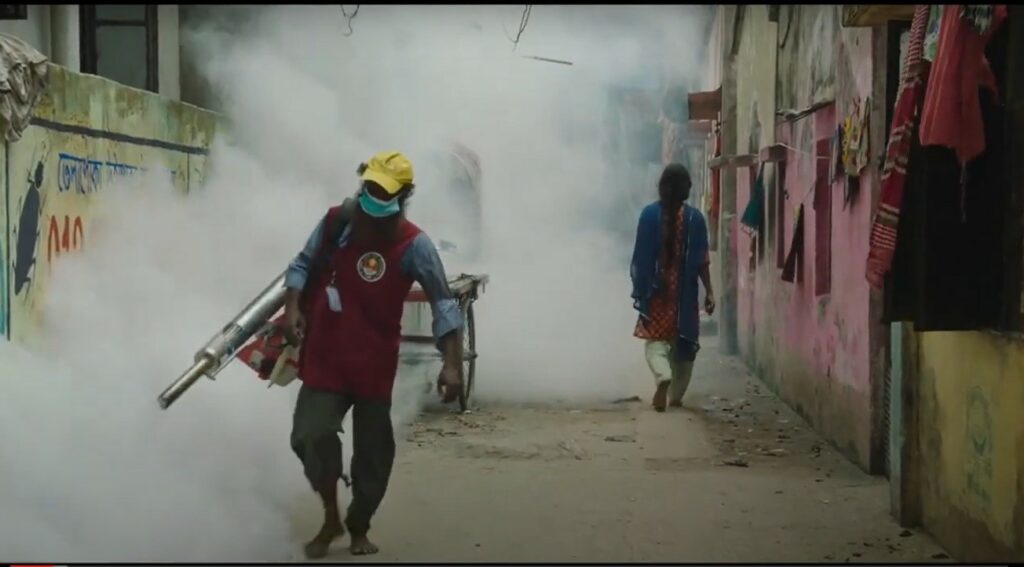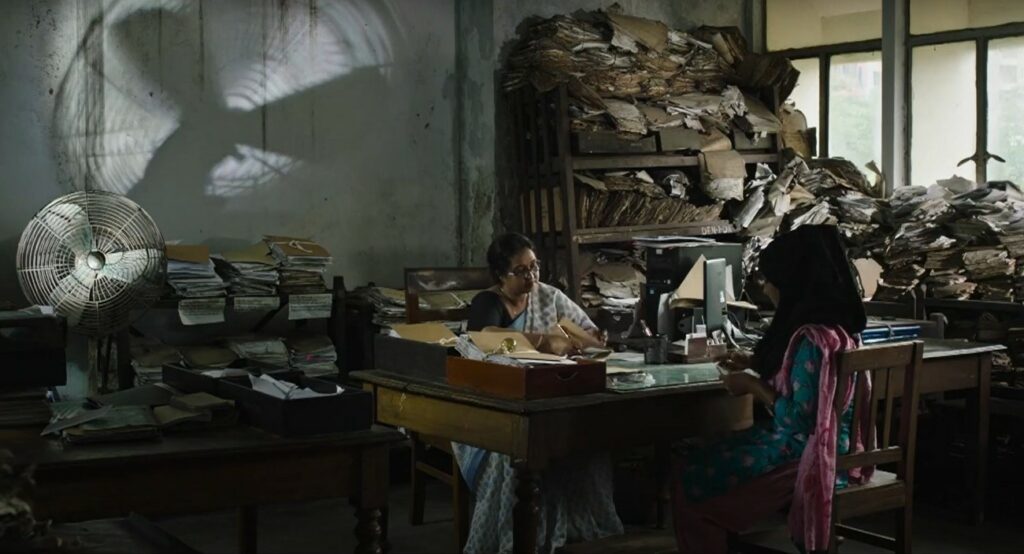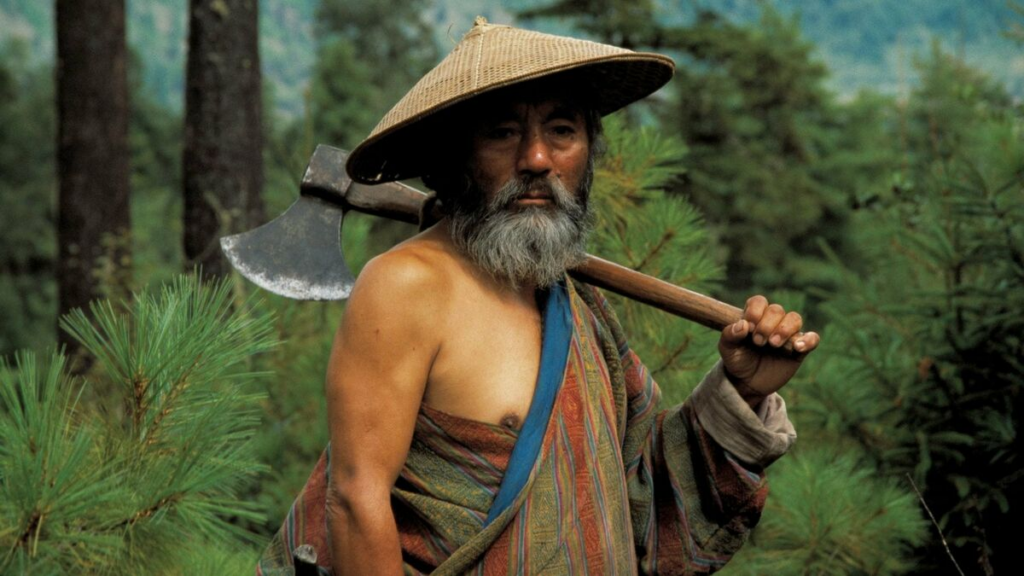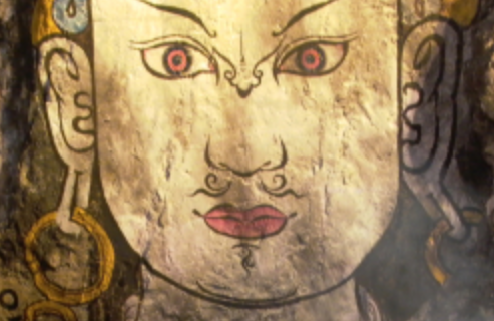Title: Made in Bangladesh
Director: Rubaiyat Hossain
Released: 2020
Country: Bangladesh
Language: Bengali
English Subtitles: Y
Closed Captioning: Y
Streaming/Available on: Amazon Prime and YouTube
Made in Bangladesh is a Bangladeshi drama that continues director Rubaiyat Hossain’s focus on social realism in her filmography. The film incorporates strong emphasis on setting and composition to present a realistic overview of the struggles and injustices faced by female workers in Bangladesh’s garment industry. By revealing the status quo for Bangladeshi garment factory workers, Hossain critiques unfettered capitalism and demonstrates its impact on the urban working class. Furthermore, the film’s focus on the perspective of impoverished female characters fighting for their rights challenges the male-centric narratives prevalent in Bangladeshi society and exposes how capitalism and patriarchy amplify each other in modern Bangladesh.
The film focuses on Shimu (Rikita Nandini Shimu), a young woman employed in Dhaka’s garment industry and her fight to establish a union at her factory. After narrowly escaping death in a factory fire, Shimu is interviewed by Nasima (Shahana Goswami), a social worker who introduces her to workers’ rights and unions. Through careful planning with Nasima and conversations with fellow workers, Shimu discreetly builds enough support to present a petition to form a union at her factory to the Ministry of Labor. Along the way, Shimu and her comrades face many threats and injustices at the hands of their bosses. Furthermore, her campaign engenders conflict with her husband, who urges Shimu to leave her job. As tensions at her factory and home reach a breaking point, Shimu must choose between acquiescing to her bosses’ demands to cease organizing the union or giving up her old life to follow her principles.
Hossain’s powerful cinematographic choices highlight the topics she desires to bring to the audience’s attention. Serious issues in Bangladeshi society are presented to the audience through an emphasis on social realism, which manifests as an aesthetic focus on poverty throughout the film. From the opening scene, viewers are confronted with the harsh reality of life in Dhaka’s urban slums. Hossain communicates the squalor of the slum where Shimu lives through long tracking shots of her walking along dirty streets or through fumigation clouds. Similarly, through extended shots of mundane occurrences like sewing garments at the factory, the film communicates the ennui and hopelessness of poverty. Mise-en-scène is utilized heavily to this effect, as can be seen later in the film when Shimu visits the Ministry of Labor to submit paperwork for the union. The office is filled with mountains of yellowing documents that Shimu faces as she asks how long the process will take, providing tangible evidence of the obstacles the fledgling union is facing. Thus, Hossain’s stylistic focus on setting and composition provides specific visual motifs that the audience can associate with the film’s major themes.
The association of Shimu’s fight for the union with her struggle for personal freedom continues Hossain’s interest in realistic movies that center female perspectives. An example of this is her award-winning film Under Construction (Bangladesh, 2015), a narrative about a middle-class woman struggling to discover herself amid the bustle of urban Bangladesh. In the film, the protagonist encounters liberation through writing a play, much like Shimu finds her voice by creating a union. Another similarity is that the play in Under Construction is set in a garment factory, providing further evidence of Hossain’s focus on the intersection of labor exploitation and womanhood. Hossain’s treatment of the latter topic centers around the idea of marriage as a hindrance to women’s freedom. This is seen when Shimu’s husband forces her to wear a hijab and locks her in to prevent her from working, and explicitly stated when Shimu tells Nasima, “we are women. We’re screwed if we’re married and screwed if we aren’t.”
Made in Bangladesh also exposes the impact of unregulated capitalism on the working class. The limitless control Shimu’s male bosses have over the female workers shows how Bangladesh’s entrenched patriarchy augments the working poor’s struggle; in the words of Shimu’s friend, “there’s no law for the poor.” Two major settings in the film, the factory and Shimu’s home, are artfully interwoven to imply that capitalism and patriarchy are inextricably intertwined. The film’s response to this predicament is to underscore the power of the collective. Indeed, the first semblance of change in the factory occurs when all the women demand to keep the fans on while they sleep there. However, in keeping with her emphasis on social realism, Hossain refuses to oversimplify the film’s narrative into a victory of good over evil, leaving the union’s fate unknown as the movie ends.
Hossain’s Made in Bangladesh is a compelling story from the often-overlooked perspective of working women in one of the world’s poorest countries. In keeping with her oeuvre’s emphasis on social realism, the film employs setting and composition to present its viewers with a sobering look into garment factory workers’ lives and explore how this demographic is affected by the intertwined issues of worker exploitation and patriarchal oppression.

Figure 1: Shimu (Rikita Nandini Shimu) walks through a cloud of fumigant on the way home from work.

Figure 2: Shimu sits opposite a pile of aging paperwork as she submits her union application.


